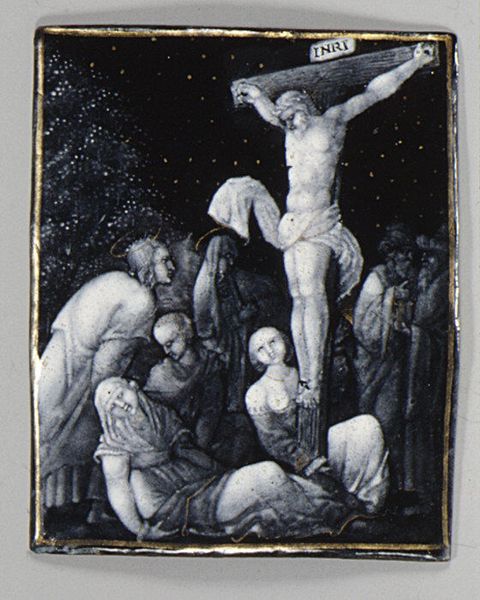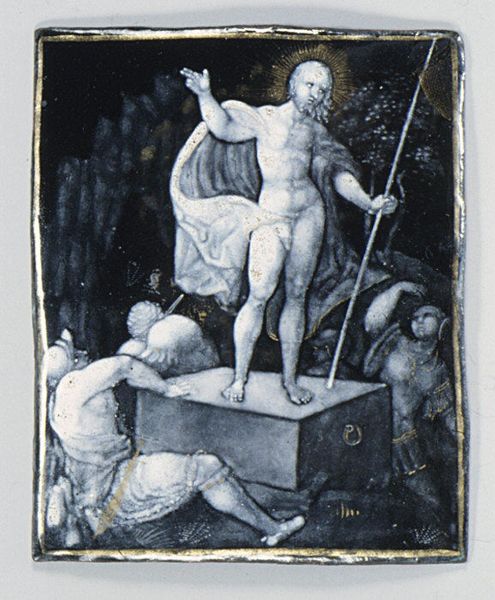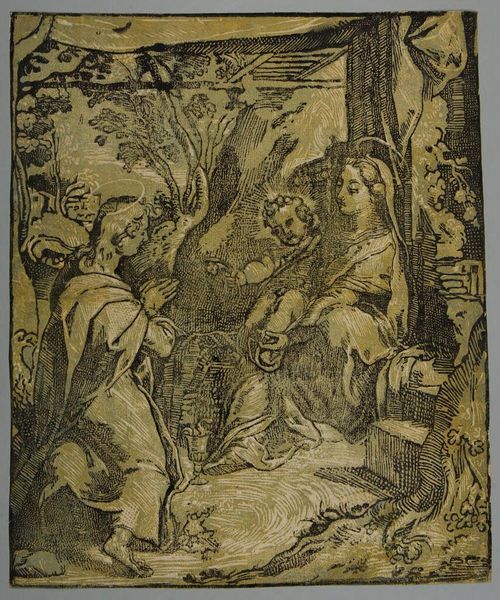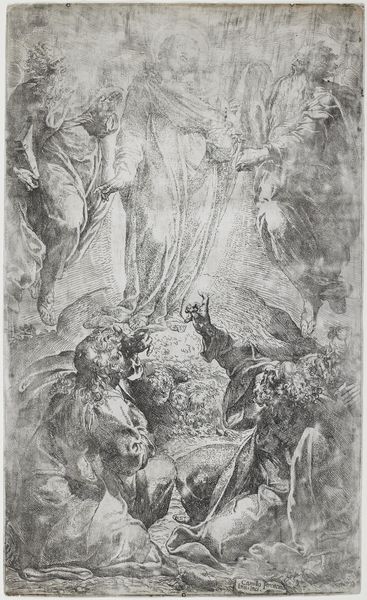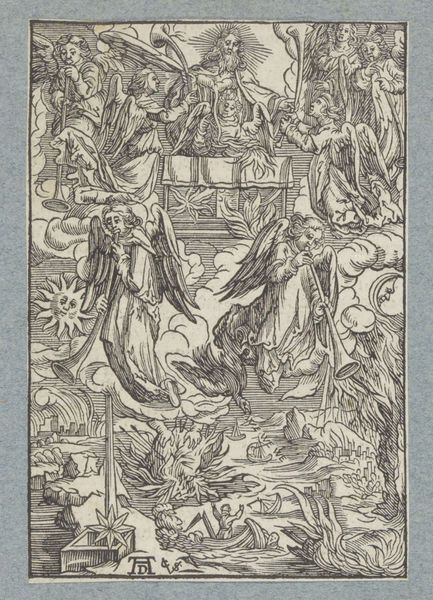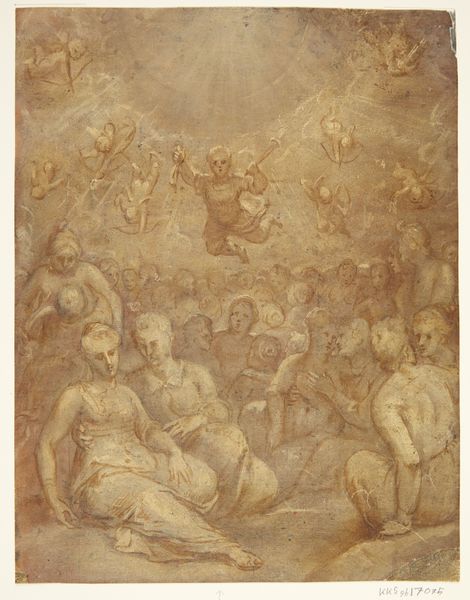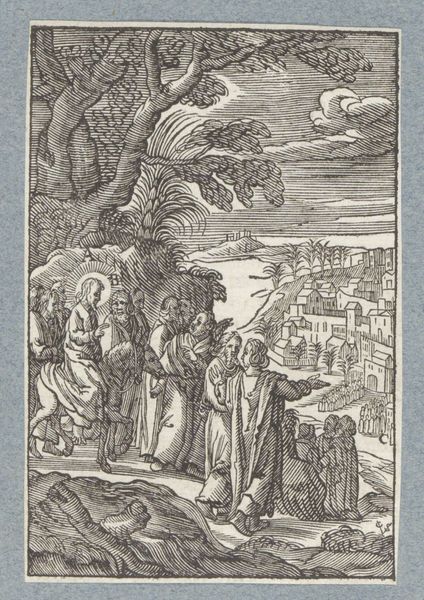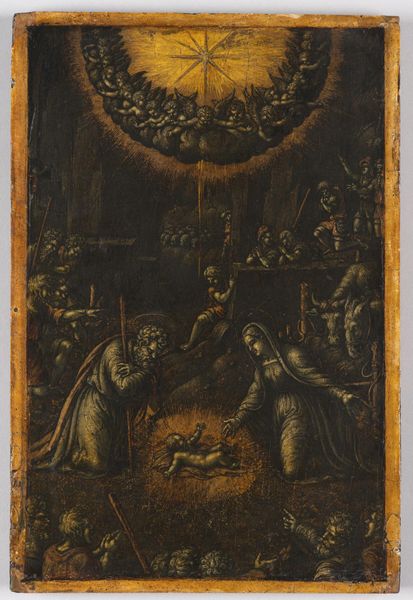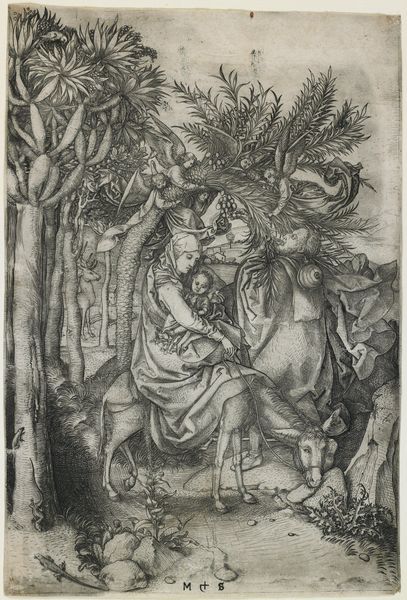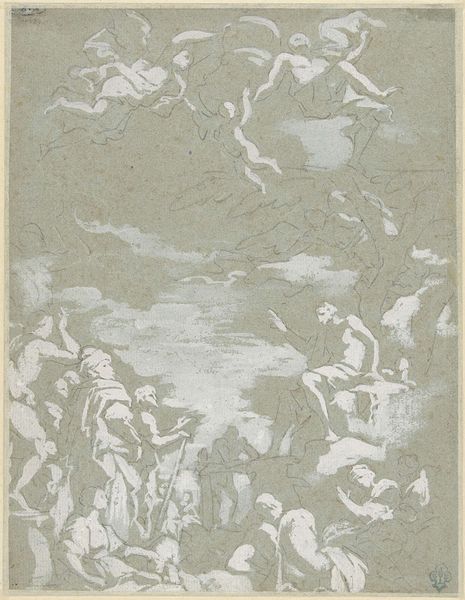
sculpture, enamel
#
sculpture
#
art
#
strong focal point
#
figuration
#
sculpture
#
enamel
#
history-painting
#
decorative-art
#
italian-renaissance
#
miniature
Dimensions: 2 3/4 x 2 1/4 in. (7 x 5.7 cm)
Copyright: Public Domain
Curator: This exquisite miniature, "The Agony in the Garden," is attributed to Jean II Penicaud, dating to between 1530 and 1565. Crafted in enamel, it offers a poignant snapshot of religious history. Editor: My immediate impression is one of stark contrast and fragility, which creates such an overwhelming sense of sadness, a mood reinforced by the use of a monochrome palette, heightening the drama. Curator: The figures arranged on the plate showcase a balanced asymmetrical composition, the white enamel figures positioned against the black backdrop that generates tension. Note the formal repetition in their gestures, the sleeping figures echoing Christ's posture, albeit in repose. Editor: Enamel work is very labor-intensive, and seeing this biblical scene rendered on such a precious and fragile surface transforms my reading of it; think about the cultural capital associated with luxury goods and their power in delivering sacred and devotional images to an exclusive Renaissance audience. Curator: Precisely, this miniature exemplifies the exquisite artistry valued during the Italian Renaissance. It distills the emotional core of the scene through controlled brushstrokes and refined detail, doesn't it? Editor: Indeed, and considering that each firing during the enamel process increased the risk of ruining the piece, the commitment of time and materials illustrates that value—religious, cultural, monetary—was deeply embedded in its making. How might such craftsmanship intersect with contemporary debates about labor and artistic production, I wonder? Curator: The focal point on the illuminated Christ praying creates visual and narrative cohesion, guiding our interpretation of the narrative. I am left feeling that even though miniature in scale, this enamel work is mighty in expressing deep religious sentiment. Editor: I'm struck by the enduring relationship between materials, meaning, and making and what this panel can tell us about the lives and times it emerged from. It all has a lot to do with why art matters to us today.
Comments
No comments
Be the first to comment and join the conversation on the ultimate creative platform.
